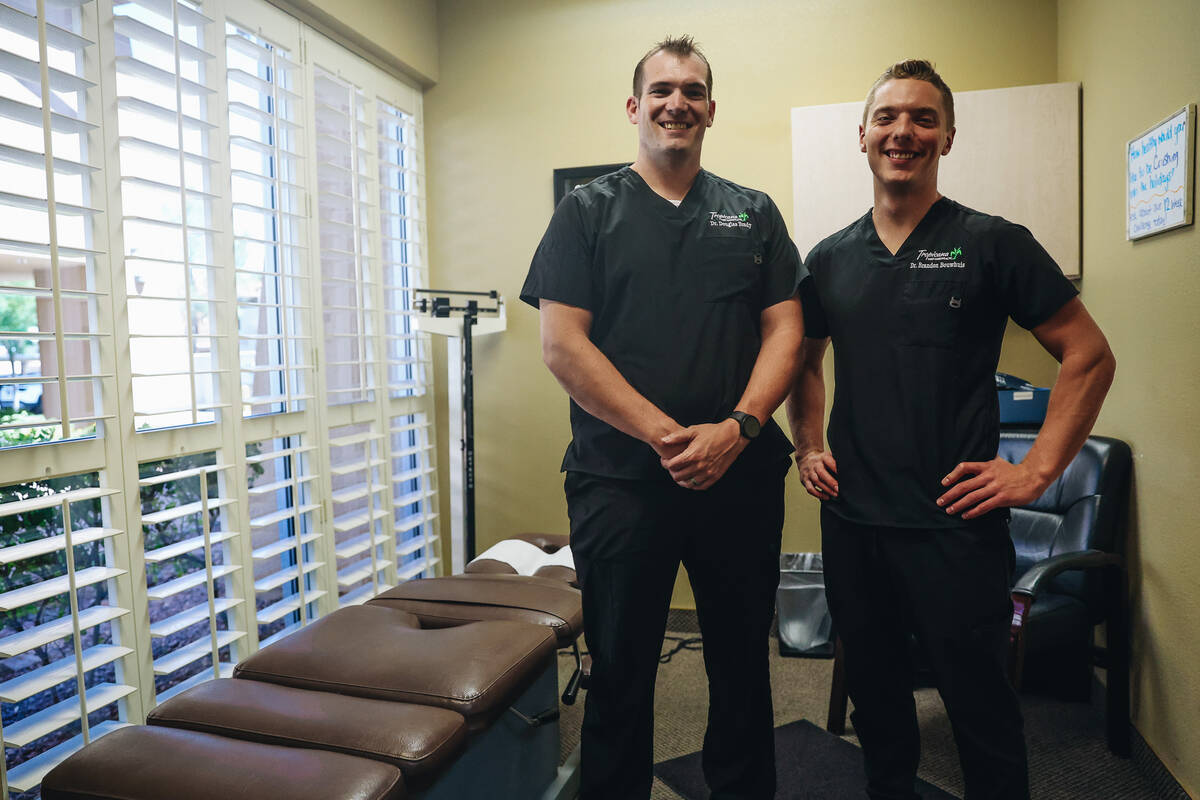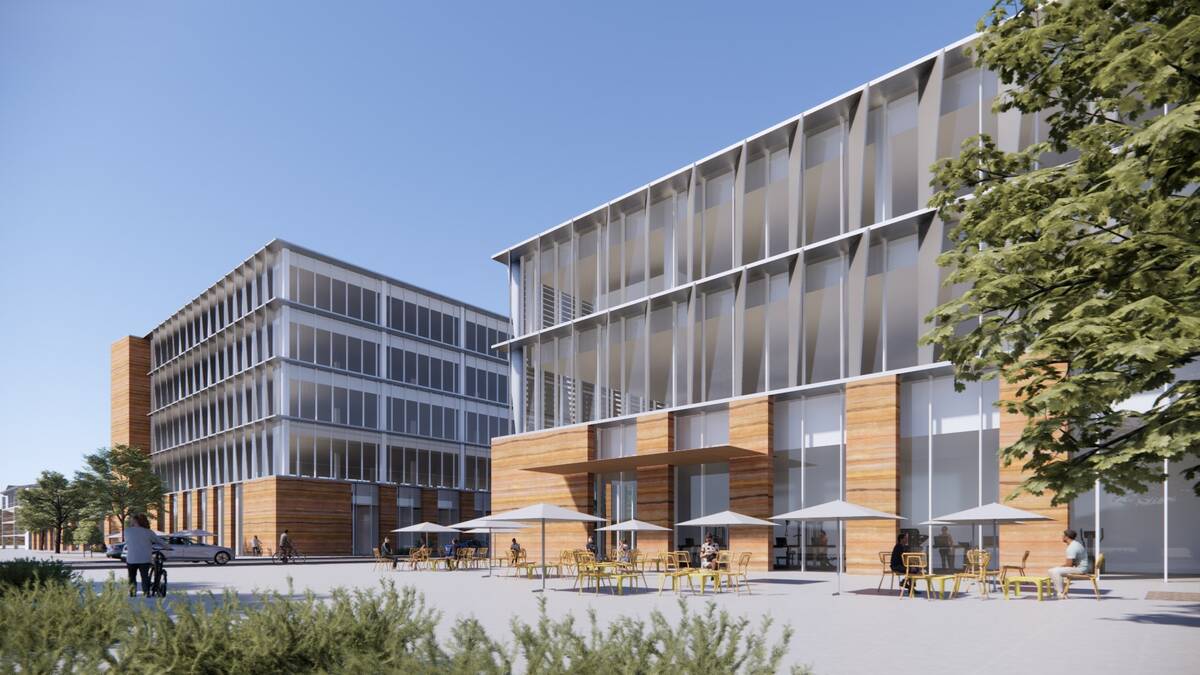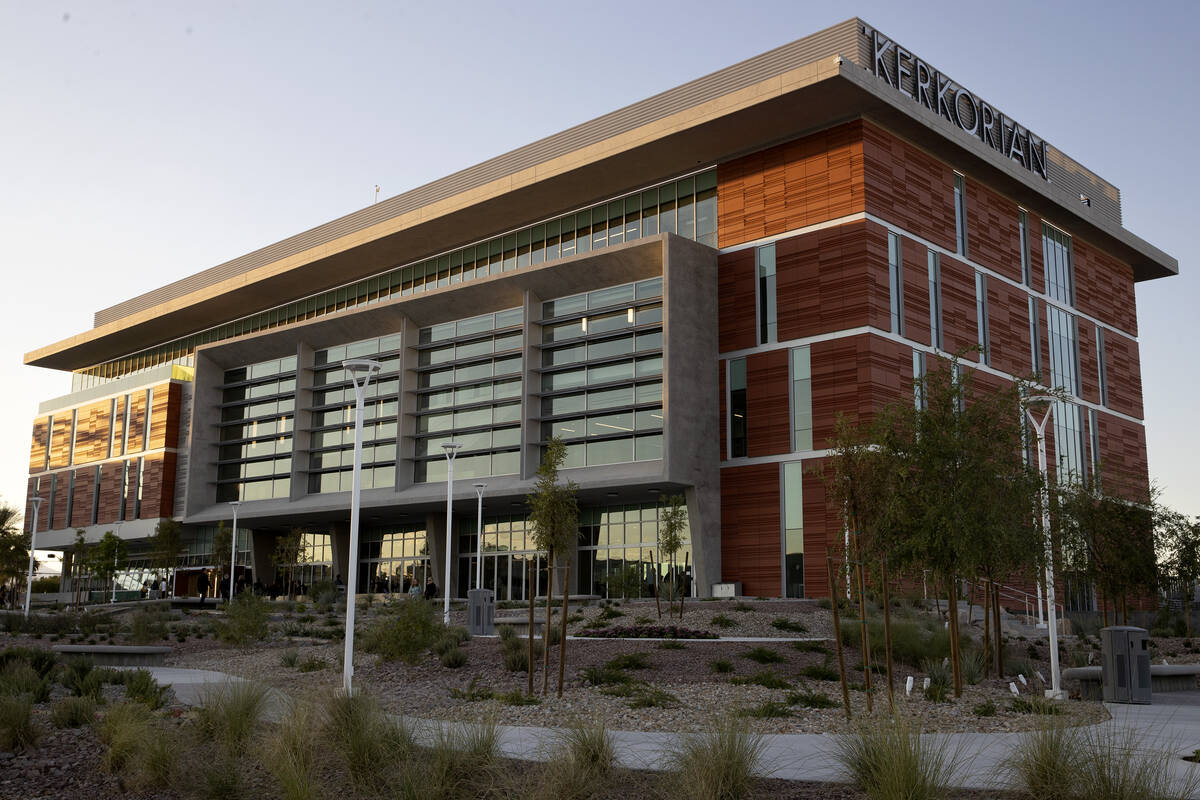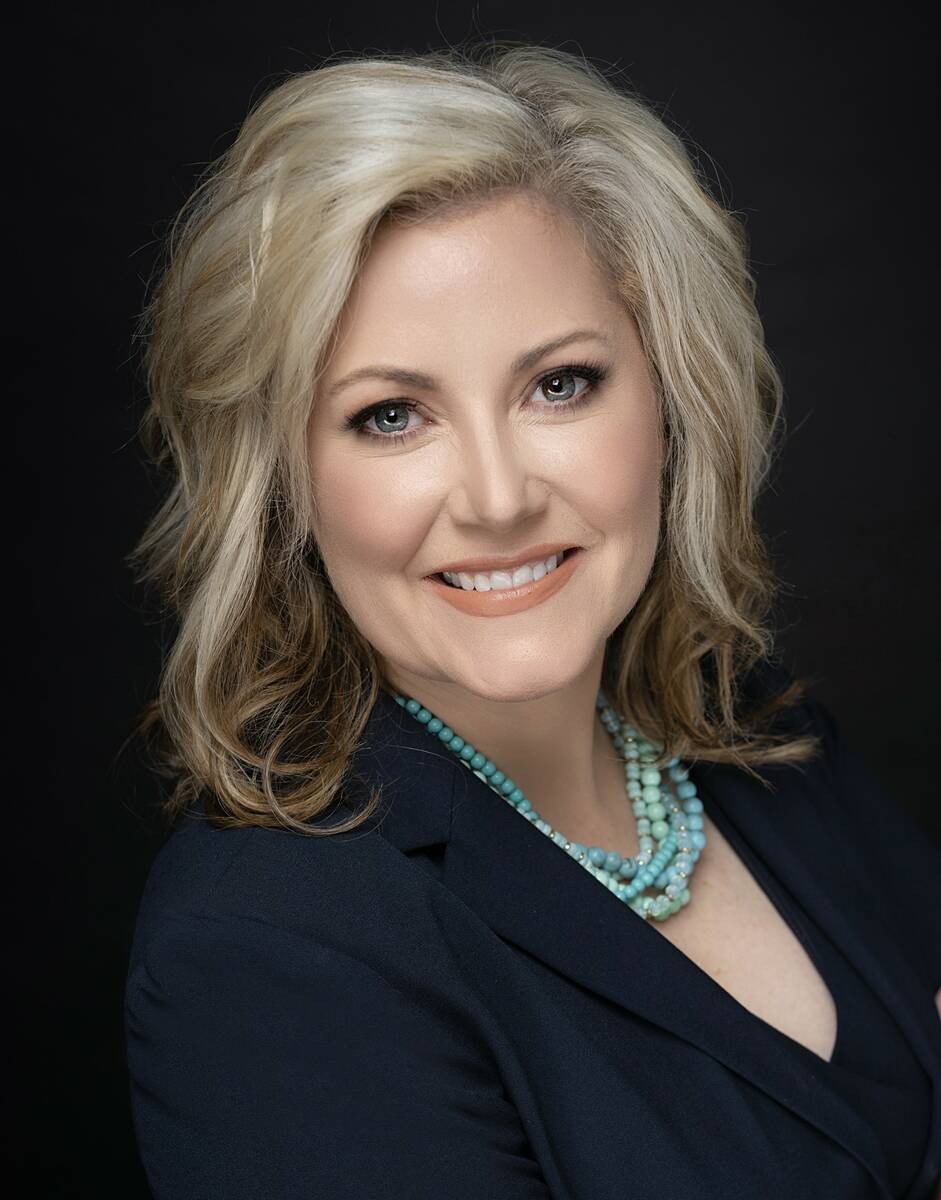‘Low vacancy, high demand’: Las Vegas’ medical industry facing real estate pinch
Spring Valley chiropractor Dr. Doug Brady is seeing an uptick in patients in recent years as more people have become educated about chiropractic care via social media.
“With social media, many people in varying age groups are being presented with more and more information, especially in the medical field,” said Brady, who runs Tropicana West Chiropractic. “Even in the past few years through the use of YouTube, TikTok and Instagram, patients are becoming more exposed to things like chiropractic care and its different techniques.”
Brady, who works alongside fellow chiropractor Dr. Brandon Bouwhuis, said the increase in patients brings additional needs for his practice. But if he were to look for space to expand his practice, his options may be limited.
The need for health care services in Las Vegas and across the nation are trending up, as more and more of the baby boomer generation enters retirement, a Peter G. Peterson Foundation study found. Health care spending has gone up in lockstep, increasing the need for medical and health care services real estate.
And in Las Vegas, supply and demand for medical office space are waging a war against a growing industry. Right now the local market has approximately 8.4 million square feet of inventory, a number that has not risen in two full quarters.
“Demand is outpacing supply,” Colliers International Vice President Stacy Shapiro said. “As a snowbird state, our fast-growing aging population will continue to put pressure on our health care delivery system in Nevada. Clearly, our development and health care community need to respond to this demand by creating more and larger scale health care environments in Southern Nevada.”
More expensive to build
Shapiro said simply building out office space is not enough. Each clinic, practice or business comes with its own unique requirements and standards such as Brady’s chiropractic clinic, which has individual bays for patients within a standard office space.
In short, medical office space is more expensive to build than traditional office space, and the real estate industry is not as incentivized to build it.
“It really is its standalone sector,” Shapiro said, “because the buildings, the requirements, the compliance are very different from your standard office building. There’s different layout requirements because of patient access and even down to the types and sizes of the buildings, and things like the cleaning of them.”
The Las Vegas Valley, already strapped for land on both the commercial and residential side, is seeing a low 6.4 percent vacancy rate in the medical office market, according to a second quarter report from Colliers International. The vacancy rate for general office space right now is roughly 11 percent.
“Medical and office vacancy used to be neck and neck in terms of vacancy. But in the past three years since COVID, Vegas’ medical market has seen the highest net absorption and rent growth in a decade,” Shapiro said.
In its second quarter market report, Colliers pointed out that the shortage of medical office space is in need of attention.
“Southern Nevada’s medical office inventory did not increase this quarter. Even without any completions, this was an improvement over the second quarter of 2022, when a 124,009-square-foot medical office building was demolished,” the report stated.
Shapiro said medical office space is a niche market within real estate and area brokers and developers need to be educated on it. She said she and a number of other brokers are working nationally as mentors to help train and educate new brokers to help the sector both access space, convert existing square footage and compete for it with other sectors.
“You can’t just convert an office building into a medical office building without doing major retrofitting,” Shapiro said. “It’s just a different animal than an office building.”
Health care wins
While Las Vegas regularly ranks in the bottom 10 for access to health care services and affordability of treatment, like in the Commonwealth Fund 2023 Scorecard on State Health Systems Performance, the valley is seeing some recent wins with more on the horizon.
The Kirk Kerkorian School of Medicine at UNLV graduated its first class of doctors in May 2021. Located in the Las Vegas Medical District, the school currently has 246 medical students, 150 faculty physicians, and more than 320 medical residents and fellows. The school currently sees about 20,009 patients a month and employs approximately 1,616 people with an annual budget of $43.1 million.
Paul Joncich, manager of media relations for the school, said since the first students arrived in 2017, the school has been expanding to meet the growing need of both health care in the area, and equipping the next generation of workers in the field.
“We are in growth mode,” he said. “In addition to the new 135,000-square-foot medical education building that opened in November of 2022, we are expanding our class size from 60 to 66 students, with an eye on expanding to 90 per class in a few years, and getting more doctors into the pipeline to help with the physician shortage in Southern Nevada.”
How bad is the physician shortage?
Nevada like many states is facing a shortage of physicians, and a 2020 study published in the National Library of Medicine found that it likely will get worse over the next 10 years.
The study found that the West is expected to have the greatest physician shortage ratio — about 69 physician jobs per 100,000 people — while the Northeast will have a surplus of 50 jobs per 100,000 people.
Dr. Marc Kahn, the dean of the Kirk Kerkorian School of Medicine and vice president of health affairs for UNLV, told the Las Vegas Review-Journal in a previous interview from July that Nevada ranks near the bottom for physicians per capita.
“As a state we are woefully undersupported in funding for residencies,” Kahn said.
Nevada has about 403 federally funded positions, compared with more than 9,000 in California and nearly 17,000 in New York, he said.
Joncich said how this shortage is impacting wait times at hospitals and clinics, though, is tough to track on a local or state level.
The medical school is currently in the process of recruiting an additional 100 physicians to help fill this glaring gap as well as a host of other expansion initiatives, he said.
“We are growing our research programs, which requires more lab space,” Joncich added. “We are developing new residency training programs, ones that don’t currently exist in Southern Nevada, a forensic pathology fellowship with the Clark County Coroner’s office, a rheumatology residency, and other training programs.”
The City of North Las Vegas, which has the biggest need for health care services, also is expected to start construction later this year on Helios Health and Wellness Campus, a planned 135-acre project that will incorporate a hospital, restaurants, retail and hotels.
The project, located south of the Las Vegas Beltway on North Pecos Road, is being spearheaded by national master plan developer Pacific Group, headquartered in Salt Lake City.
Shapiro said Helios is definitely a step in the right direction for the entire valley when it comes to health care services and filling the gap when it comes to medical office space, however, the way forward will be a complicated one in terms of getting the real estate market to put the bottom line second to the needs of the community.
“Nothing about health care is simple,” she said. “The demand for health care is outpacing supply, and not only in Las Vegas, but across the country, so this is a story we are all dealing with right now in the industry.”


























